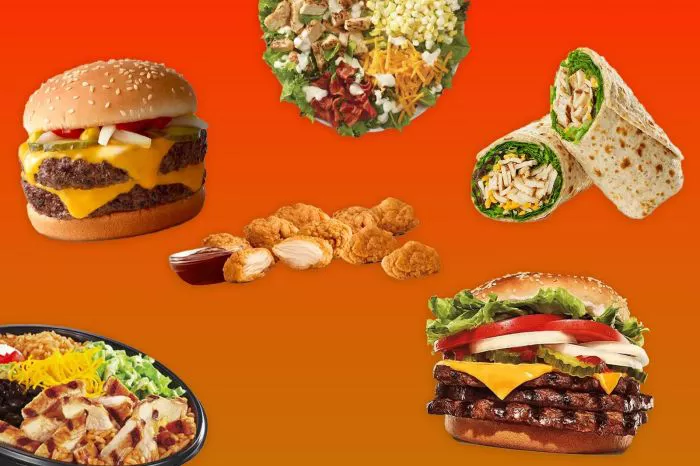Fast food—a term that conjures images of golden fries, juicy burgers, and speedy service—has become an integral part of modern life. But why is it called “fast food”? Let’s delve into the origins, evolution, and impact of this culinary phenomenon.
The Need for Speed: Catering to Modern Lifestyles
Fast food is so-named because it is prepared quickly and does not require a lengthy preparation process or a long wait for the food to be ready. The very essence of fast food lies in its rapidity. Whether you’re a busy professional grabbing lunch during a short break or a family on the go, fast food caters to our need for convenience and speed. The preparation time is often less than 30 minutes, making it an attractive option for those with time constraints. Fast food establishments prioritize efficiency, ensuring that customers can satisfy their hunger without sacrificing valuable time.
Historical Roots: An Ancient Concept Evolved
The concept of ready-cooked food for sale has ancient origins. As cities grew, urban dwellers faced challenges related to space and proper food preparation. Homes lacked the room and equipment for elaborate cooking, while procuring cooking fuel was expensive. Frying foods in vats of searing oil was both hazardous and costly. Urbanites sought alternatives, leading to the rise of pre-prepared meats or starches like bread or noodles. These offerings allowed customers with limited time, such as commuters or hourly laborers, to avoid waiting for their food to be cooked on-the-spot, as expected in traditional sit-down restaurants. Fast forward to the modern era, and the concept of quickly prepared meals for busy urbanites has evolved into the fast food industry we know today.
Emergence of the Drive-Thru: Revolutionizing Convenience
The 20th century witnessed the birth of the drive-thru—a game-changer for fast food. Drive-thrus allowed customers to order, pay, and receive their meals without leaving their cars. The drive-thru concept revolutionized the industry, emphasizing speed and convenience. Iconic chains like McDonald’s and Burger King” data-wpil-keyword-link=”linked”>Burger King embraced this model, serving up burgers, fries, and shakes through car windows. The drive-thru became synonymous with fast food, creating a cultural shift in dining habits and further solidifying the association between speed and convenience with the fast food experience.
Standardization and Mass Production: Efficiency in Operation
Fast food outlets rely on standardized processes and mass production to maintain their efficiency. Ingredients arrive pre-prepared, from bagged buns to frozen beef patties. The assembly line approach ensures consistency across locations, allowing for swift assembly of orders. Franchise operations often ship foodstuffs to each restaurant from central hubs, maintaining uniformity in ingredients and preparation methods. This streamlined approach enables fast food joints to churn out orders swiftly, meeting the demands of hungry patrons while minimizing wait times.
The Dark Side: Health Implications
While fast food satisfies our hunger pangs and caters to our fast-paced lifestyles, it comes with significant health implications. Many fast foods are high in saturated fat, sugar, salt, and calories, contributing to poor dietary habits and potential health issues. Regular consumption of fast food has been linked to cardiovascular disease, obesity, high cholesterol, and insulin resistance. These correlations persist even when accounting for lifestyle factors, underscoring the association between fast food consumption and increased risk of disease and early mortality. Despite its convenience, moderation and mindful consumption are essential when indulging in fast food to mitigate its negative health effects.
Innovations and Adaptations: Meeting Changing Demands
Fast food has evolved to meet changing consumer demands and preferences. One notable innovation is the “Chipotlane”—a hybrid drive-thru pioneered by Chipotle. It combines customization (essential to the brand) with speed and convenience. Customers order via the mobile app, ensuring their burritos and bowls are made to order with fresh ingredients. The Chipotlane streamlines the process, allowing pickups in seconds. This adaptation demonstrates that innovation need not sacrifice core values and illustrates how fast food establishments can evolve while maintaining their commitment to quality and customization.
Conclusion: Balancing Convenience with Health Consciousness
Fast food remains a double-edged sword, catering to our fast-paced lives while demanding vigilance regarding health. As we navigate this culinary landscape, let’s savor our fries while keeping an eye on our well-being. After all, in the race against time, we all crave a quick bite now and then. Fast food’s name reflects its essence: swift, convenient, and sometimes controversial. Whether we’re at the drive-thru or ordering via an app, it serves as a testament to our need for speed in an ever-accelerating world.

